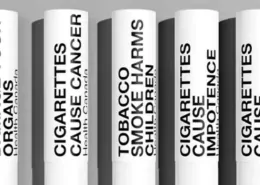Vaping Better for Oral Health Than Smoking, Major Review Finds
A large-scale review of 52 human studies has provided further evidence that vaping and other non-combustible nicotine products, such as heated tobacco and nicotine pouches, are significantly gentler on oral health than smoking traditional cigarettes. The review, led by German researchers and published in the prestigious Harm Reduction Journal, systematically compared the oral health outcomes of users of modern nicotine products with both cigarette smokers and individuals who use no nicotine at all. While the findings unequivocally show that quitting nicotine entirely remains the healthiest option for gums and teeth, the evidence strongly supports the role of these smoke-free alternatives in reducing oral harm for adult smokers who switch completely.
The researchers analyzed nearly 200 separate findings from human studies published up to August 2024. To create a clear comparison, they grouped these findings into four key areas of oral health:
- Pre-cancerous changes: The potential for developing lesions or cellular changes that could lead to oral cancer.
- Inflammation markers: Signs of gum inflammation, such as swelling and bleeding upon probing by a dentist.
- Everyday clinical signs: Common dental health metrics like plaque buildup, gum pocket depth, and bone loss around the teeth.
- Oral microbiome changes: Shifts in the delicate balance of bacteria living in the mouth.
Key Findings: A Clear Hierarchy of Oral Health Risk
The review established a distinct hierarchy of harm across the different user groups. To compare the risks, the researchers developed a scoring system where positive numbers indicated worse outcomes compared to non-users, while negative numbers suggested better outcomes. Across all measures, vapers scored an average of 0.37, indicating some negative effects compared to non-users. However, when directly compared to cigarette smokers, the results for vaping were consistently more favorable. Smokers scored -0.19 relative to vapers, meaning their oral health was significantly worse.
The authors concluded, “Individuals who engaged in vaping exhibited significantly reduced negative effects in the oral cavity compared to those using combustible cigarettes.” This pattern held true across multiple specific indicators.
For inflammation, in 76 comparisons between vapers and non-users, the vaping group was more likely to show signs of swollen or bleeding gums. However, in 69 direct comparisons between vapers and smokers, the smoking group consistently demonstrated worse inflammatory outcomes. This suggests that while vaping is not entirely benign, it is far less inflammatory to oral tissues than smoking.
The differences were most apparent in routine dental check-up items. One six-month study cited in the review found that smokers experienced a deterioration in their gum health over time, with increased bone loss and deeper gum pockets. In contrast, among the vapers in the same study, these crucial oral health markers remained stable, showing no decline over the same period. This points to a significant reduction in the progressive damage associated with smoking when users switch to vaping.
Ecigator is one of the well-known vape brands spun off from FM Technology Co., Ltd, it’s an ISO-certified disposable vape manufacturer for OEMs, ODMs, and OBM since 2010. The founder team comes from top firms with more than 10 years of experience in the vaping industry and has devoted thousands of hours to providing users with a better and better experience.

18K Disposable Pod Kit
Disposable Pod Kit – 18ml changeable pod with 650mAh rechargeable battery.

35K with Large Screen
35000 Puffs Disposable Vape with 3D galaxy screen. Eco and Pulse working modes.

30K DTL Disposable
30K Puffs DTL(Directly to Lung) disposable vape with airflow control and screen.
The Impact on the Oral Microbiome
The review also delved into the invisible ecosystem of bacteria in the mouth. It found that while vaping did cause shifts in the oral microbiome compared to non-users, these changes were not as disruptive as those seen in smokers. One six-month cohort study revealed that each group developed its own unique and stable bacterial pattern. The non-user group had the healthiest microbiome, the smoking group had the most disrupted, and the vaping group landed somewhere in between. Scientists caution that upsetting the natural balance of oral bacteria may, over the long term, raise the risk of gum disease, infections, or even oral cancer, but the evidence again points to vaping as a less disruptive option than smoking.
Several factors in vaping may contribute to these effects. The base liquids, propylene glycol and vegetable glycerin, are known to absorb water, which can lead to a drier mouth and potentially encourage plaque buildup. Nicotine itself, even at the lower doses delivered by some vapes and pouches, is a vasoconstrictor, meaning it narrows blood vessels. This can reduce blood flow to the gums, which can mask early signs of gum disease (like bleeding) and delay healing processes.
Limitations and the “Dual Use” Challenge
The authors of the review are careful to note its limitations. They stress that this was a qualitative review, not a traditional number-crunching meta-analysis, because the 52 studies included varied widely in their size (from 30 participants to over a million), design, duration, and testing methods. This “mixing of apples and oranges” means the results should be interpreted as strong indicators of general trends and probabilities rather than precise, hard risk estimates.
A significant challenge in this area of research is accounting for “dual use.” In the U.S., for example, nearly 30% of adults who vape also smoke cigarettes. Many of the studies reviewed relied on participants’ self-reporting of their smoking status or on short-term carbon monoxide breath tests, which may not always catch occasional or light smoking. As a result, the authors acknowledge that some smokers could have been misclassified as exclusive vapers, which could slightly overstate the apparent harm from vaping alone.
Another key limitation is time. Modern e-cigarettes were only introduced to retail stores in 2007, with heated tobacco devices and nicotine pouches arriving even later. This means no study in the review could track users for the two decades or more that are typically needed to observe the emergence of long-latency diseases like oral cancer. As lead author Gerhard Scherer stated, “There is a need for further research into the long-term effects of these products… as well as the underlying biological mechanisms.” The researchers call for longer-term studies that track exclusive users of each product type, verify their nicotine exposure with biomarkers, and control for other lifestyle factors like diet, alcohol use, and oral hygiene habits.
Conclusion: Vaping as a Harm Reduction Tool for Oral Health
This comprehensive review strengthens the evidence base supporting vaping and other smoke-free nicotine products as a harm reduction tool for adult smokers. The findings clearly demonstrate that for individuals who switch completely from combustible cigarettes to these alternatives, there is a significant reduction in harm to their oral health. While quitting nicotine altogether remains the best and safest choice for one’s gums and teeth, the reality is that millions of people continue to smoke. For this population, the message from this research is clear: switching to vaping or using nicotine pouches is proving to be a much safer option for their mouth health than continuing to smoke.
- Read more: Vaping & Nicotine Pouches vs. Smoking: Oral Health Risks Compared
- Press source: Vaping better for gums than smoking, says major German review
- Beckley, WV Passes New Vape Shop Location Restrictions - August 14, 2025
- Vaping Better for Oral Health Than Smoking, Major Review Finds - August 14, 2025
- Cook Islands Charges Australian Tourist in Vape Bust - August 14, 2025









